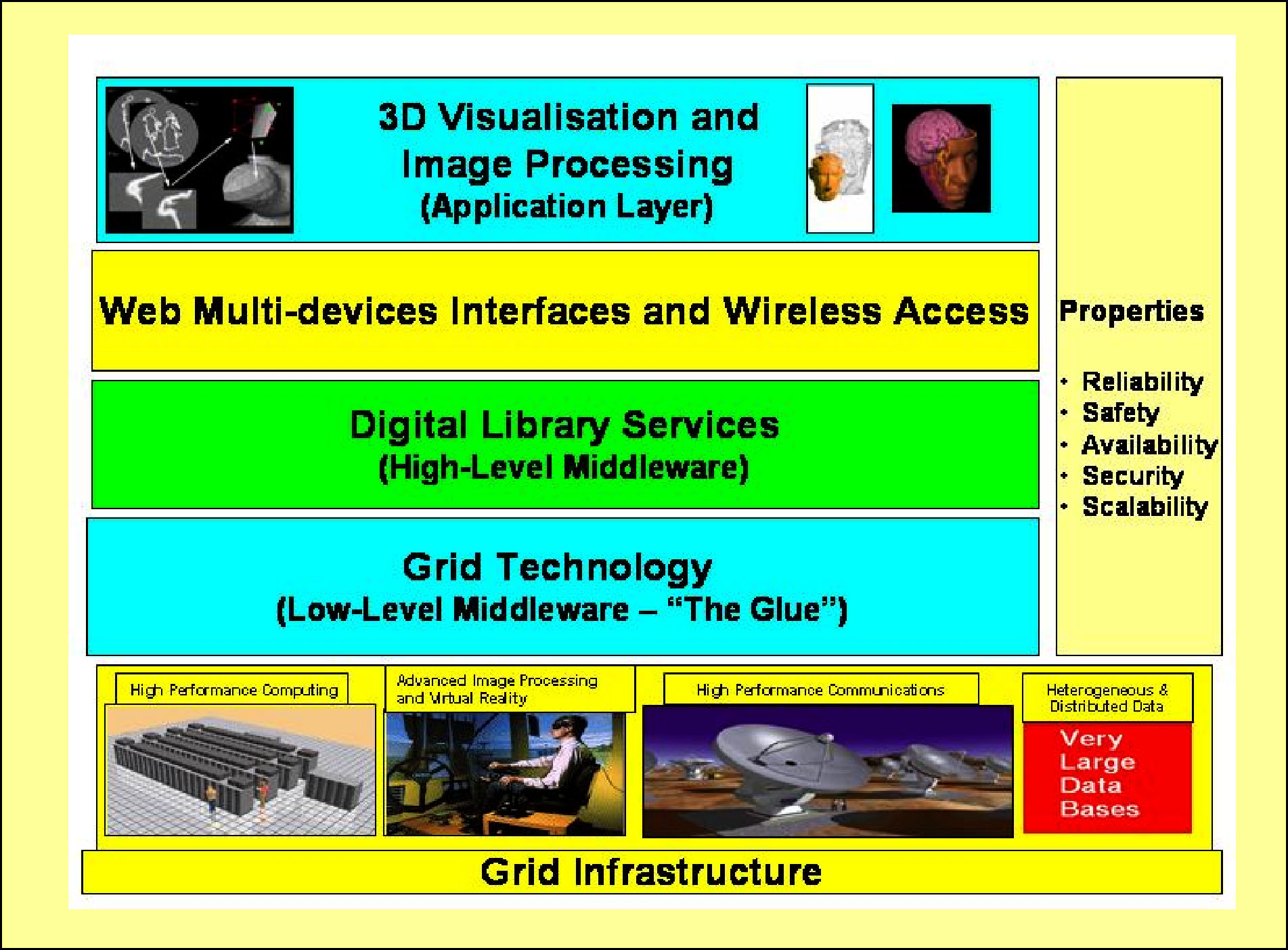E-Science has been defined as large scale scientific research carried out through distributed global collaborations enabled by networks, requiring shared access to large data collections, large computing resources, and high-performance visualisation. The benefits to research and society resulting from the ability to process, disseminate, and share information in unprecedented dimensions, has prompted worldwide initiatives to develop the cyberinfrastructure needed to empower e-Science. An example of such infrastructures is shown in figure 1, where: · the lowest layer, (Grid Infrastructure) provides the physical resources, (computation, communication, storage), informational resources (databases, archives, instruments) and capabilities (software packages, brokering and scheduling services). · The physical resources are virtualized by the second layer (Grid Technology, or Low-Level Middleware), acting as the "glue" for the overall system, and offering core services such as remote process management, co-allocation of resources, storage access, information discovery, security, etc.· The third layer (Digital Library Services) provides basic digital library services, enabling submission, indexing and discovery of mixed-media objects (documents, videos, images, environmental data, 3D objects, etc.), and managing these objects through annotation, composition, cooperative editing, etc. · The fourth layer, (Web Multi-Devices Interfaces and Wireless Access) supports varying device access and environmental context while preserving usability. This allows users to access the platform in a transparent, easy and secure way.· The last layer (Application) contains the applications built on top of the platform. Applications are implemented by different disciplinary modules coupled in an integrated modelling system. ISTI has acquired an unique competence in the above technologies, through participation to National and European research consortia, in several cases with the role of project co-ordinators. ISTI recognizes that this patrimony of competence and technology could be exploited to build a cyberinfrastructure supporting e-Science. The initiative would be highly beneficial to CNR and to the national research community at large, by supporting the development of advanced applications of strong scientific, societal and economical impact. To this purpose, ISTI is ready to engage in a project, to be known as ARMeS, covering layers 2 to 5 Figure 1, and relying on a large scale, European Grid Infrastructure as the first layer. To demonstrate the power of the platform, two demonstrators are proposed for implementation in layer 5. The first demonstrator, in the domain of medical imaging, aims at providing a cooperative environment to support education in the health care and surgical techniques. The second demonstrator, in the domain of cultural heritage, aims at creating highly accessible frameworks for "time navigation" of historical sites.The project has been conceived as the joint effort of the majority of the Institute, exploiting for the best human and technological resources. Beside its intrinsic value , the project will contribute to consolidate the common background of the Institute, to foster synergies and, to demonstrate the effectiveness of ISTI as a large, dynamic research subject in the extended area of Information Technology.
Vedi anche:
Immagini:

